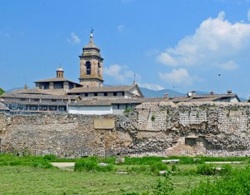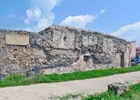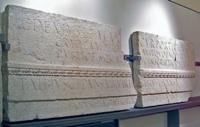

Roman Amphitheatre (1st century AD)



A new Palazzo Vescovile was built on foundations provided by part of the amphitheatre soon after the diocese was re-establised in 1218, and the rest of the site was used as the bishops’ garden. The apse of church of Santa Maria del Carmine was built on part of it from 1602, and stones from the original structure were reused in the church. The subsequent rebuilding of Palazzo Vescovile further encroached on the Roman structure. Other structures on the site were demolished as part of a restoration in 1930. The arena is sometimes used for cultural performances.
Roman Theatre (1st century AD)
Remains of the Roman theatre have been found in many of the houses in the “island” formed by Via XI Febbraio, Via Ludovico Aminale, Via Tre Colonne and Via del Teatro Romano. The theatre itself still existed in fairly complete condition in the 15th century.

-
•Caius Dexius Luci, an aedilis curulis, built the arcade around the seating area of the theatre; and
-
•Titius Albius Cai and his son, Caius Albius Titi, both of whom were quattuorviri, paid for its decoration.
This inscription is now in the Museo Archeologico.

